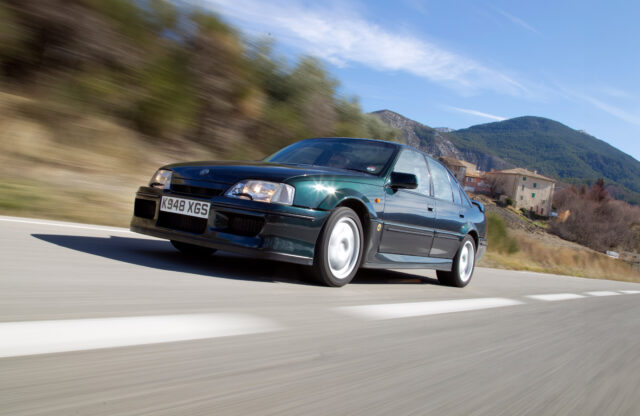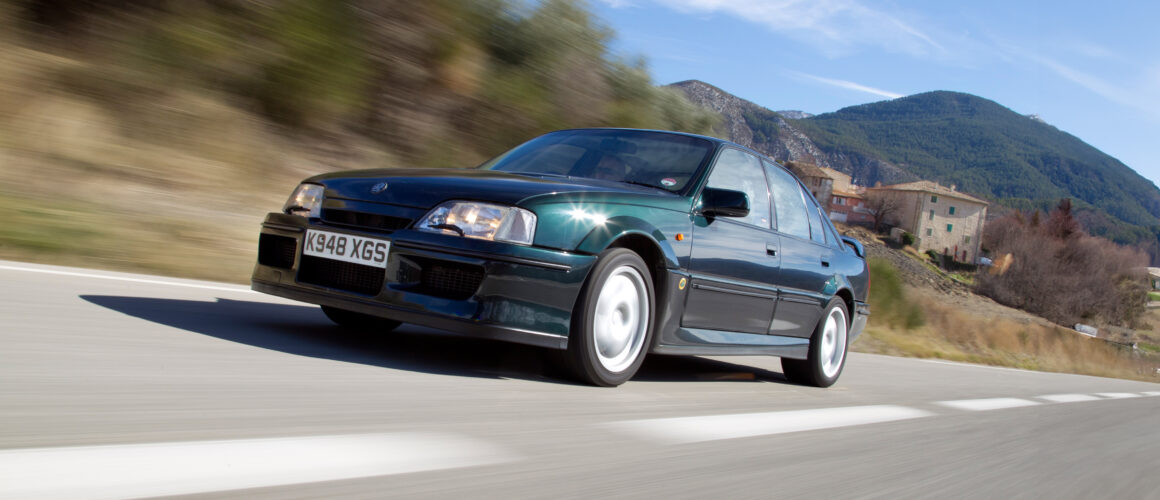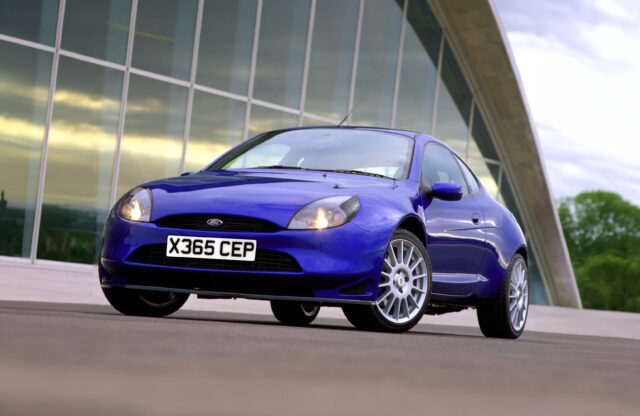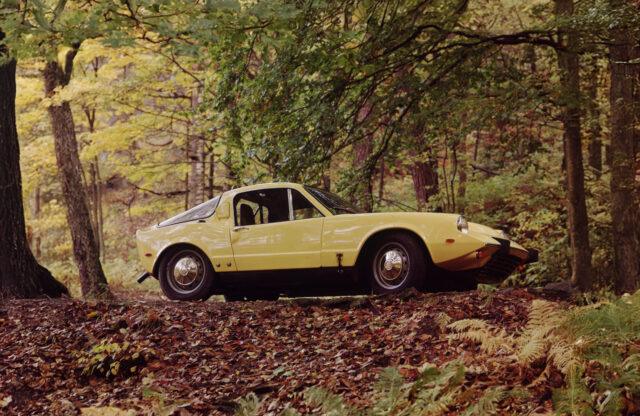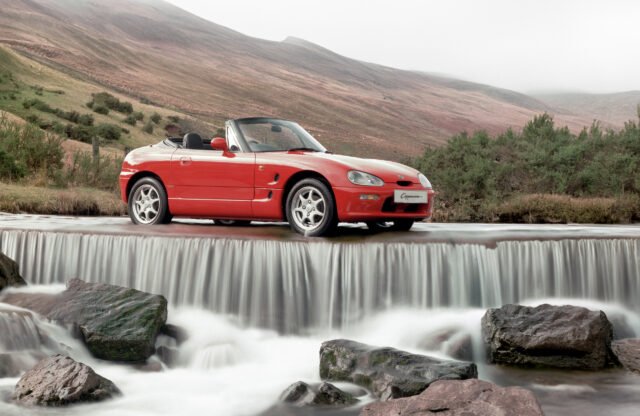The term ‘ram-raiding’ might conjure images of Range Rovers and Transit vans with bull-bars, but during the early 1990s one criminal gang terrorised the West Midlands in a stolen Lotus Carlton. A 176mph saloon car outrunning the police on several occasions quickly made the headlines, and one report (on The Independent’s online archive) suggests that they made away with more than £20,000 in stolen alcohol and cigarettes. Panda cars just couldn’t keep up. While The Daily Mail called for it to be banned, press coverage made the Lotus Carlton a legend.
This was a flagship for General Motors, which owned both Lotus and Vauxhall/Opel at the time, stirring up nostalgic memories of the Lotus Cortina. Lotus based this super-saloon on the top-of-the-range GSI 24v (Opel Omega 3000 24v in Europe), an executive car already well-regarded for its handling and performance. After being built in Russelsheim, Germany, they were shipped directly to Hethel, where the Lotus transformation took place.
At its heart was a long-stroke 3.6-litre version of the Vauxhall’s straight-six engine, with two Garrett T25 turbochargers for good measure. This produced 377bhp and 419lb ft, meaning the standard five-speed gearbox was swapped for a much beefier six-speed GM gearbox, borrowed from the Chevrolet Corvette ZR-1. Suspension was re-tuned and developed at Hethel too, with big AP Racing brake calipers sitting behind the deep-dish 17-inch wheels. A body kit was added too, not just for looks but to give the car some much-needed high-speed stability…
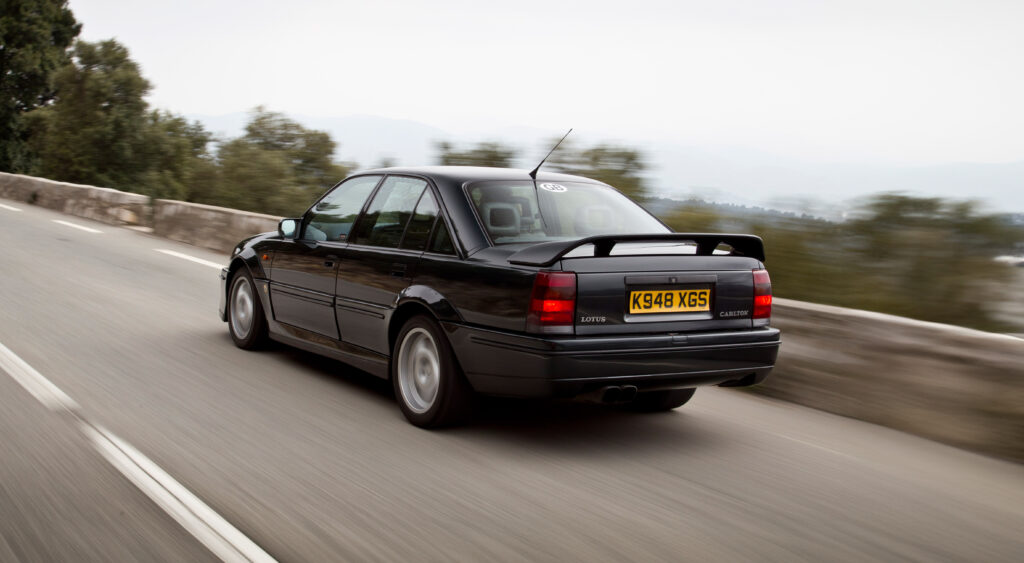
Launched in 1990, this was Britain’s first fully fledged super-saloon. Hitting hard against the 155mph electronically limited German competition, Vauxhall quoted the top speed at a conservative 174mph, although if you had a long enough road it’s reckoned a particularly healthy car might get closer to 180mph. But this wasn’t a one-trick pony. The Carlton was every bit as composed and comfortable as you would expect of anything wearing a Lotus badge, and super-long gearing made the most of its epic torque.
In total, 950 Lotus Carlton/Omegas were built between 1990 and 1992, 286 being right-hand-drive and Vauxhall-badged. All were painted in Imperial Green from the factory and, with little in the way of options to choose from, buyers willing to fork out the £48,000 asking price took a while to find. Drive one today, and it’s a bit of a time machine. Not just the performance, but the look, feel, even the smell of that executive-class interior transports you back in time. Wrestling the clutch and brutish six- speed ’box might take some effort, but it combines with the incredible performance to provide an authentic 1990s super-saloon experience.
These have never been cheap cars, and prices have been on the rise for some time. Rarity and notoriety might seem like the obvious reasons, but it’s the driving experience that’ll keep the Lotus Carlton in the hands of long-term owners. Find a good one and enjoy one of the greatest autobahn-stormers ever built. Just make sure your left leg is ready for a serious work-out!
Lotus Carlton common problems
• Many will have been modified, which can lead to premature engine problems. A well-maintained engine is good for over 150,000 miles before it needs a rebuild. Listen for a noisy timing chain; failure causes huge damage. It’s common for the viscous fan to fail, especially on infrequently used cars.
• The gearbox is tough, but the heavy clutch can feel odd due to a worn pivot pin or pressure plate: both can be costly to fix.
• Corrosion can be a problem, especially in metalwork hidden by the glassfibre bodykit panels fitted by Lotus.
What to pay?
Pay £35,000-45,000 and you will get a good solid car, with a fair few miles but a decent service record. Restored cars are out there, and if done to a good standard will cost £60,000-85,000 – which is also what you will need for a reasonably low-mileage original example. The best cars are pushing upwards of £100,000; a basketcase restoration project will be more like £15,000.
